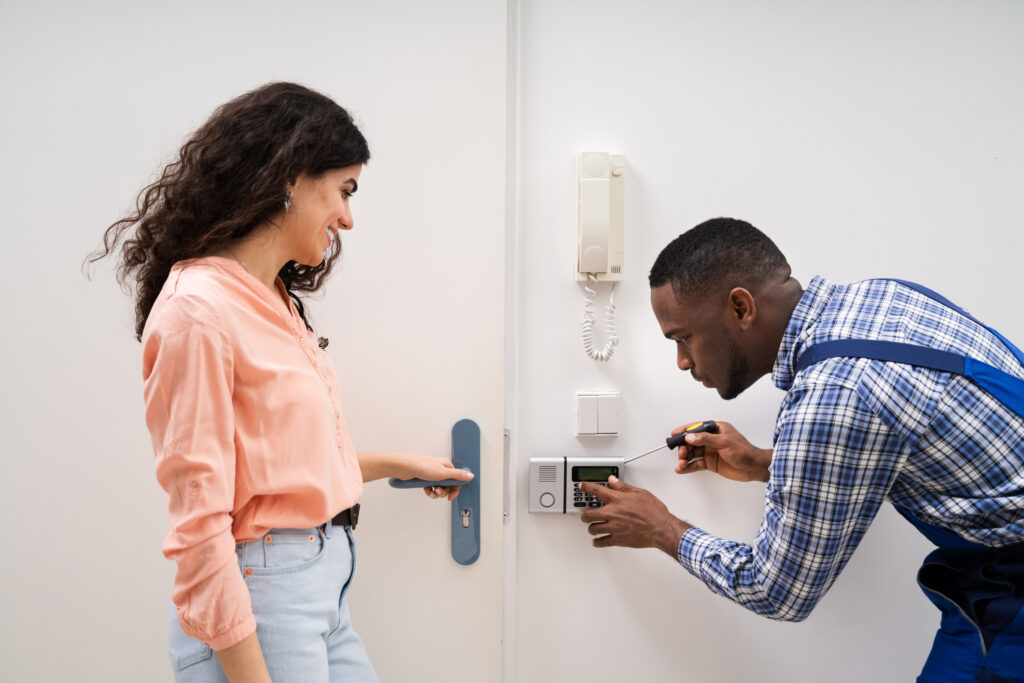Tips for Changing Locks After a Roommate Moves Out
When a roommate leaves, your routines shift—and so should your approach to door security. Even with a friendly parting, keys and codes can linger in backpacks, cloud accounts, and keyrings. Updating locks promptly protects privacy, clarifies boundaries for new occupants, and prevents awkward or risky surprises. This guide walks you through legal considerations, practical hardware choices, fast rekey strategies, smart lock updates, and communication templates so you can secure the home with minimal hassle.
Why Changing Locks After a Move-Out Matters
Keys are small but powerful. A single unreturned copy provides access to bedrooms, storage areas, and mail. Even if everyone parted on good terms, roommates often share keys with partners, pet sitters, cleaners, or friends. Over time the trail gets fuzzy. A quick lock update restores clear control and signals that the household has reset. It also simplifies onboarding for a new roommate because you can hand over a fresh key set and printed codes with confidence.
Think of this as routine maintenance tied to life events. You would change smoke-detector batteries on a schedule; changing or rekeying locks after a roommate moves out is the access-control version of that habit.
First Steps: Plan Before You Turn a Screw
A little preparation turns a stressful chore into a tidy afternoon project. Use this quick checklist to avoid surprises and keep everyone informed.
Confirm Authority
If you rent, review the lease and local rules. Many leases require landlord approval for lock changes or specify that management must receive a working key. If you own, ensure household members understand the plan and timeline.
Inventory Openings
List every entry: front, back, garage, side gate, mailbox, shared storage, and bedroom doors with locking hardware. Photograph existing locks and note brand, finish, and keyway so you can match or upgrade cleanly.
Decide: Rekey or Replace
Rekeying changes the key that operates the lock while keeping the hardware. Replacement swaps the lock for a new model or feature set. Rekeying is faster and budget-friendly; replacement is ideal for worn hardware or when you want keypads or higher security.
Schedule the Window
Choose a quiet period when everyone is home or reachable. Collect old keys first, then change keys or codes immediately so there’s no gap in control.
Prepare New Access
Cut the new keys, print a small label for each, and generate updated smart-lock codes in advance. Create a short handout or note with the new codes and any app invites if you use smart access.
Document the Change
Snap a photo of each rekeyed cylinder and record who received which key. Store this with the date and any code changes. Organized records simplify future updates.
Rekeying vs. Replacing: How to Choose
Rekeying is ideal when the lock is in good condition, the finish matches your decor, and you simply want a new key. A locksmith adjusts the pins in the cylinder to fit a new key, usually in a single visit. This is efficient for multi-door homes where you want one key to open several locks. If you have a mix of brands, a technician can often convert cylinders so you end up with a common key.
Replacement makes sense if the lock is worn, the function is wrong for the door, or you want to add features like keypads, smart access, or higher security cylinders. Replacement is also a chance to standardize finishes and upgrade strike plates to longer screws that anchor into framing for better resistance.
A blended approach works well: rekey exterior deadbolts for speed and budget, replace a problematic bedroom lever, and add a keypad to the main entry so code-based access covers cleaners or future guests without extra keys.
Smart Locks and Codes: What to Update
Rotate User Codes
Remove the departing roommate’s code first. Then rotate any shared codes for cleaners, dog walkers, or delivery access. Assign unique codes per person moving forward to improve accountability.
Audit Admin Access
Check the app’s list of administrators and revoke access for anyone who no longer lives there. Remove old phones from trusted devices and reset backup email or SMS contacts.
Update Automations
Review geofencing, auto-lock timers, and guest schedules. Disable expired routines tied to the old roommate’s device and confirm auto-lock works with the door closing smoothly.
Replace Batteries
Fresh batteries prevent last-minute lockouts during the changeover. Use matched cells from the same lot and run a calibration if your model supports it.
Refresh Wi-Fi or Bridge
If you changed Wi-Fi credentials, migrate the lock while the old network is still active to avoid re-enrollment headaches. Confirm the bridge or hub signal is strong at the door.
Backup Access
Keep a mechanical key or emergency power method available. Show remaining roommates where the backup lives and how to use it.
Key Control Habits for Shared Homes
After the change, set simple rules so access stays organized. Use discreet key labels that don’t reveal unit numbers or addresses. Maintain a tiny log: who holds which key number, when it was issued, and when it was returned. For short-term visitors, prefer temporary keypad codes to physical keys. If keys must be loaned, set a specific return time and log it in your notes app.
Consider moving to a restricted keyway during your next upgrade. Restricted systems require authorization to duplicate keys and make it harder for copies to appear without permission. This level of control is optional but helpful in high-turnover households.
Low-Drama Security Upgrades to Pair with the Lock Change
Reinforced Strikes
Swap short screws for 3-inch ones into framing. Stronger anchoring improves resistance and reduces door rattle.
Door Alignment
Adjust hinges and strike plates so the deadbolt throws fully. Smooth alignment reduces wear and battery drain on smart locks.
Consistent Keying
Key exterior doors alike for convenience. Keep one interior storage or office door on a separate key if you need controlled privacy.
Mailbox and Gate
Do not forget shared mailboxes, bike cages, and side gates. Rotate those keys or codes as part of the same session.
Lighting and Visibility
Add motion lighting near entries. Better visibility reduces fumbling at night and deters probing while people move out or in.
Emergency Contact Card
Post a small card inside with the locksmith’s number, code access rules, and where the spare battery or key is stored.
Legal and Etiquette Considerations
In most places you may secure your residence, but leases might require that the property manager holds a working key. If your departing roommate is still on the lease until a set date, coordinate changes with management so you remain compliant. When you change locks, provide the landlord with a key as required and document delivery via email.
Keep communications courteous and clear. A concise note like “We’re updating keys on Saturday; please return any copies by Friday” sets expectations without drama. If relations are strained, stick to the facts and use timestamps in messages for a record.
Step-by-Step Process for a Smooth Lock Update
1) Collect old keys. Ask for all copies, including any left with friends. 2) Stage new keys and codes. Label and place them in envelopes for remaining roommates. 3) Rekey or replace the primary entry first, then secondary doors. 4) Update smart locks by removing old users and adding new codes. 5) Test together. Lock and unlock each door with the new keys or codes to confirm smooth operation. 6) Document who has what and store a spare in a secure location. 7) Notify the landlord or building manager if required and deliver a working key.
If time is tight, prioritize the exterior deadbolt used most often, then the interior door leading from garage to home, then back or side doors, then bedroom locks. Mailbox and storage can follow within a day or two.
Polite, Clear Messages You Can Reuse
Key Collection
“Hey, we’re updating keys this weekend as part of move-out. Please return any copies by Friday so we can reconcile our list.”
Landlord Notice
“Per the lease, we changed the front deadbolt on [date]. One copy for management is available; when can we drop it off?”
New Roommate Welcome
“Welcome. Here’s your labeled key set and door code. Please keep the code private and let us know if the door feels stiff so we can adjust.”
Common Pitfalls and How to Avoid Them
Forgetting secondary entries. People change the front lock and leave the back door keyed to the old profile. Inventory every opening and finish the set. Keeping old codes active. Remove shared vendor or guest codes that the former roommate might still know. Rushing hardware choices. If a lock is sticky, rekeying alone won’t fix it. Address alignment and consider replacement. Skipping documentation. A quick photo and a two-line note save trouble next time a roommate changes.
Budgeting and Timing Tips
Rekeying several doors in one appointment often costs less per cylinder than piecemeal visits. If you plan to standardize finishes or add a keypad, combine the work. Expect the actual on-site time to include adjustments, not just the cylinder work; the best results come from checking hinge screws, strike alignment, and latch engagement so the new keys feel great from day one.
If a new roommate is arriving the same weekend a former roommate leaves, create a small overlap plan. Provide the newcomer with a temporary code, then finalize the rekey once the old roommate has returned keys and the space is cleared. This approach keeps access stable while avoiding a lockout during move-in.
Bedroom and Personal-Space Considerations
Many shared homes use passage levers on bedrooms. If you want more privacy, consider upgrading to privacy or keyed bedroom levers where appropriate and agreed upon. Make sure everyone understands emergency access and keeps spare keys or tools for privacy locks in a known location. For storage closets holding valuables, a quality keyed lever with a reinforced strike provides discreet control without advertising that the closet is special.
Mailboxes, Packages, and Deliveries
Mailboxes and parcel rooms are easy to overlook. If your household controls a mailbox key, rotate it along with door keys. For package delivery preferences linked to a roommate’s account, update profiles so messages and PINs don’t go to someone who has moved out. If your building uses a parcel locker system, change the contact number and email so notifications reach the current residents.
Make Future Changes Easier
Create a simple binder or digital note that includes door photos, lock brands, keyway type, color/finish, and the current keying plan. Add a copy of the user list for your smart locks and the dates of the last battery changes. Keep a single labeled envelope with a true spare key that lives in a secure but reachable place. Next time a roommate moves out, you can repeat the process in under an hour because the details are at your fingertips.
Reset, Reassure, and Move Forward
Changing locks after a roommate moves out is about more than hardware. It’s a reset for routines and peace of mind. Confirm authority under your lease or ownership, inventory every entry, choose rekeying or replacement wisely, rotate smart codes, and document the change. Add a few low-drama upgrades reinforced strikes, door alignment, updated lighting and your space feels calm and predictable again. With a small plan and a tidy checklist, you’ll welcome the next chapter with secure doors, clear access, and less stress for everyone who calls the place home.

